Ryan Hall's Blog, page 252
May 25, 2016
Running Tech Buzz: Garmin Forerunner 235
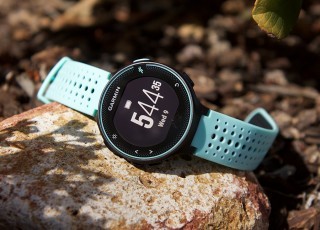
Photo: Valerie Brugos
Garmin’s new Forerunner 235 has all the training features we look for in a serious GPS run watch, along with 24/7 heart rate monitoring as well as sleep and activity tracking. We preferred the 235’s versatility and simplicity to its more sophisticated cousin the 630, with its chest strap and fussy touch screen. The 235 also improves on the 225, Garmin’s first wrist-based HRM GPS watch. It is lighter and smaller, with a bigger display and longer battery life. Physiology features also arrive via Garmin’s new Elevate heart rate sensing. We appreciated the easy access to heart rate data: instant, constantly updated resting with four-hour and seven-day trends. The thin, soft and slightly sticky strap was comfortable when snug and stayed put—we saw few GPS dropouts or wild HR readings.
Breakdown
Recovery and physiology
Run some harder workouts and the 235 will start to estimate your VO2 Max and give eerily accurate race time predictions. The Recovery Advisor kept our horses in check, estimating hours until our next hard workout.
Connectivity
Smart phone notifications, music control, and add-on widgets, apps and watch faces from the ConnectIQ store are new features that were not available in the 225.
Not sitting still
We noted a much more reliable workout synching to the Garmin Connect app than our earlier test of the 630. During our testing, cadence as a watch data field went live.
RELATED: Running Tech Buzz: Epson Runsense SF-810
The post Running Tech Buzz: Garmin Forerunner 235 appeared first on Competitor.com.
Run Your Fastest 5K
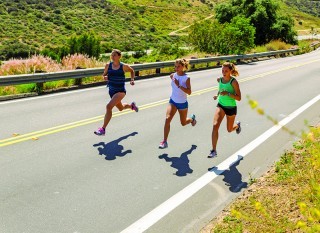
Photo: Nick Isabella
Legendary Australian running coach Percy Cerutty once said, “You only grow as a human being if you’re outside your comfort zone.” That’s 5K training in a nutshell. Because to master the 5K, you can’t just run distance, goal-pace intervals and a tempo run or two. Instead, you’ll have to schedule workouts that target every aspect of running fitness.
A fast 5K requires the speed and strength of a miler combined with the endurance of a marathoner. You can achieve that by performing a wide variety of fast-paced workouts—some that will certainly take you outside your comfort zone. The result will be an upgrade in your all-around running fitness and, quite possibly, a new personal record (PR). Over the following pages we’ll dissect each piece of the preparation process and explain how it all comes together on the way to your fastest 5K.
The post Run Your Fastest 5K appeared first on Competitor.com.
Run Your Fastest 5K: Resistance Training Routine
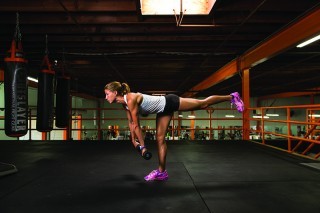
Once a week—twice if you have time—perform a short bodyweight or free-weight resistance-training routine. These exercises force your nervous system to recruit all your muscle fibers both simultaneously and explosively, mimicking the demands of the 5K start. This isn’t about building bigger muscles. It’s about teaching your body efficient control of your muscle fibers.
RELATED: Run Your Fastest 5K
All Photos: Nick Isabella
Photo Gallery
1 of {count}
Back to Start
View Larger Image
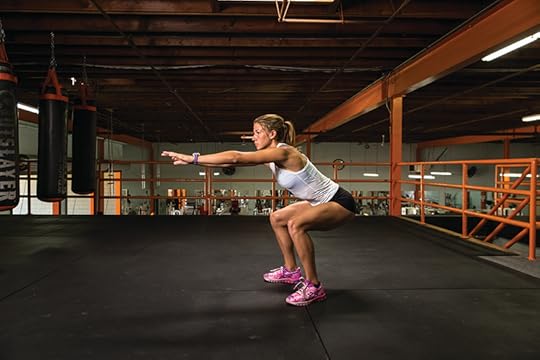
Squats
Stand straight with feet hip-width apart, toes pointed slightly out, arms at your sides. Bend your knees, keeping your thighs parallel to the floor while bringing your arms up, extended in front of your shoulders. Then push up with your quads to return to your starting position. Start with five reps, build to 10–15.
View Larger Image
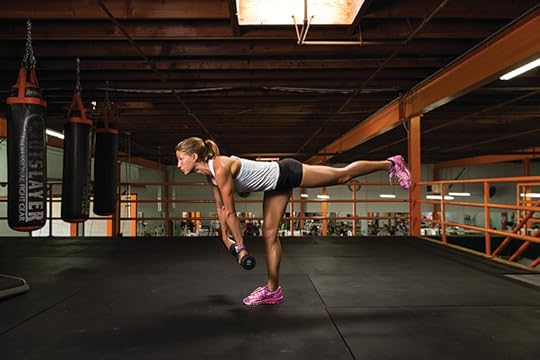
Single-leg deadlifts
Hold a 10- to 20-pound dumbbell in both hands. Stand straight with your right knee slightly bent. Lower the dumbbells to the floor, keeping your arms straight, and be sure that your back is locked as your left leg kicks back. Keep your head up and aim to maintain a straight line between your left shoulder and your left leg. When the dumbbells get close to the floor, pull your arms up away from the floor and return to a standing position. Repeat this sequence 10 times, then switch and do the same on your left leg.
View Larger Image
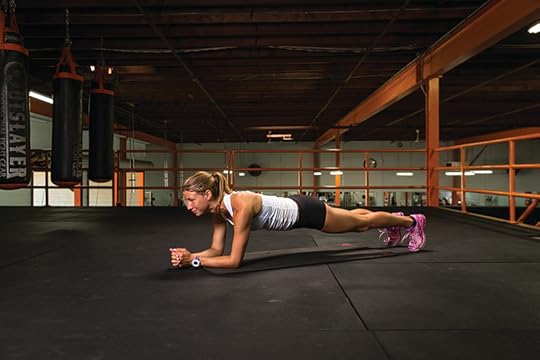
Planks
Assume a modified pushup position with your elbows bent 90 degrees and both forearms resting on the floor. Position your elbows directly underneath your shoulders and look straight at the floor. Your body should form a perfectly straight line from the crown of your head to your heels. Your feet are together with only the toes touching the floor. Hold this position for as long as you can, concentrating on keeping your abdominal and low back muscles tightened to prevent bending at the hips.
View Larger Image
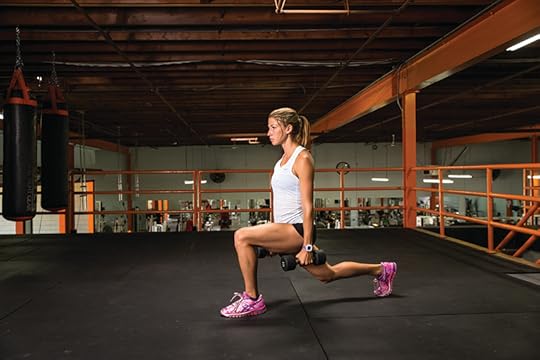
Lunges
Standing up straight with a 15- to 20-pound dumbbell in each hand, lunge forward with your right foot, keeping your arms (and weights) down by your side. Land on your heel, and make sure your knee is directly above the front of your foot. Repeat five times on each leg. Next, from a standing position, lunge to your right, keeping your left leg straight and torso upright as you step down heel first with your right foot. Do five reps leading with your right leg, then five leading with your left. Finally, step backward with your right leg, keeping your left leg firmly planted in front of you, with your left knee directly over the front of your foot. Do five reps leading backward with your right leg, then five leading with your left.
View Larger Image
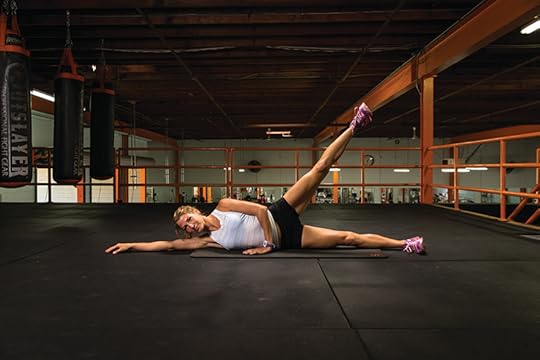
Side leg lifts
Lie on your side, legs stacked, with your head resting on one arm. Lift your top leg to 45 degrees in a smooth motion, then bring it back down. Do 10–20 reps with each leg.
View Larger Image
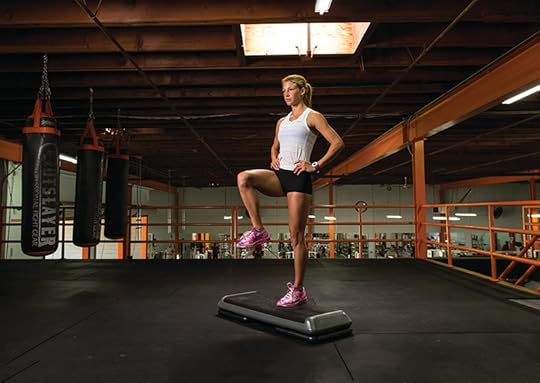
Step-ups
Balance on one foot, standing on a step or low platform, your free leg bent slightly at the knee. Lower your hips, keeping your weight on your front foot and keeping your knee in line with that same foot. Bend down just far enough to tap the ground behind you. Then straighten your bent leg while bringing your suspended leg forward, lifting the knee in front of you to waist height. Repeat. Do 5–10 reps with each leg.
Related Galleries

5K Training Tips For Running Rookies
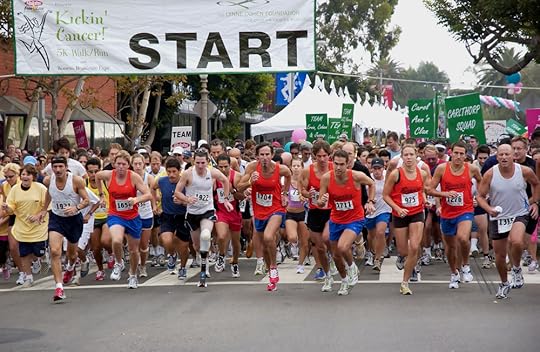
Four Interval Training Tips For Beginner 5K Runners

More Galleries
The post Run Your Fastest 5K: Resistance Training Routine appeared first on Competitor.com.
Workout Of The Week: The Sisyphus Session

Photo: istock
I love hill workouts. For my money, running up and down a hill gives you the most bang for your running buck—power, strength, endurance and speed all wrapped into one workout.
So, based on the title of this post, you might be wondering what a mythical Greek king has to do with attacking an incline.
Before we get to the Xs and Os of the workout, first a quick lesson in mythology. Sisyphus was a greedy and deceitful king who was punished for his crimes by being sentenced to roll a large boulder up a hill, only to watch it roll all the way back down to the bottom before he ever reached the top. Despite his best efforts, he was forced to proceed in this manner for the rest of eternity.
This hill workout proceeds in much the same way but unlike our poor friend Sisyphus, you’ll have the good fortune of getting to stop. Eventually.
The Sisyphus Session is one of the bread-and-butter strength-building sessions I like to have my athletes do in the weeks before beginning more pace-specific workouts. I’ll assign some variation of this workout to 5K racers, marathoners and everyone in between toward the end of the the base-building phase of their respective training programs. It’s one hill session that doesn’t discriminate.
RELATED: Steep Hill Sprints
As the nature of the name of the workout implies, you’ll be running up and down the hill a number of times. To get started, you will need to find a moderately steep incline that’s roughly 400 to 800 meters long. Before beginning the workout, warm up with 15 to 20 minutes of easy jogging. Follow that up with some dynamic warmup drills and a set of four to six 20-second strides on flat ground before setting off up the hill.
After warming up, run up the hill for 30 seconds at roughly 5K race effort and jog back down to the start for recovery. If you typically wear a GPS watch when you train, don’t pay attention to the pace on the screen. It will be slower than your actual race pace because you’re fighting against gravity, and since you’re not covering much ground at any one time it likely won’t register accurately on the watch, anyway. This workout is all about effort.
So without the aid of technology how do you know if the effort level is where it’s supposed to be as you’re running up the hill? It’s as easy as asking yourself, “Can I maintain this level of intensity for a 5K race?” If the answer is “no,” then back it off a bit.
Once you get back to the bottom of the hill, turn around and head right back up again at the same hard effort for 60 seconds. Pay close attention to your form as the workout progresses and you start to fatigue. Shorten your stride, get up on your forefoot, lift your knees and drive your arms. You should have the sensation of being pulled up the hill. When you hit the 60-second mark, turn around, jog back down to the start, and do it all over again, this time going up the hill for 90 seconds.
Congratulations, you’re almost there.
After jogging back down the hill upon completion of the 90-second repeat, head back up the hill for 2 minutes at the same effort and pat yourself on the back when you reach the top. You’ve finished the first set.
A completed set gives you 5 minutes worth of running uphill at an effort you should be able to maintain for a 5K race. For a beginning runner or someone just getting back into harder workouts after a lengthy layoff, this might be plenty of work the first time out. For more advanced runners looking to build some early-season strength, 2 to 3 sets (10-15 minutes of uphill running) is more like it. If you’re feeling overly ambitious, try a fourth set, but for most three will be more than enough. This is a tough session!
One variation of this workout is to shorten the length of each uphill rep (e.g. start with 15 seconds, work your way up to a minute) or find a hill with multiple twists and turns and forget about running up and down for set amounts of time. Simply run hard to the first turn and jog back down. Do the same to the next turn and continue proceeding in this manner until you reach the top of the hill. Adjust your effort level for the uphill runs based on the length of the hill and the number of sets you’re hoping to complete. In general, I suggest aiming for 10-15 minutes of uphill running at a strong effort.
In my college cross-country days, we did this workout on a stretch of dirt called Mountain Road, which was exactly one mile from bottom to top. We’d run up to various landmarks along the road, turn around and do it again…and again…and again. We finished the workout with an all-out ascent to the top, at which point we were finally allowed to stop. It was only then that our “punishment” was over for the day.
The post Workout Of The Week: The Sisyphus Session appeared first on Competitor.com.
Trail of the Week: Rock Creek Park Loop, Washington DC

Photo: Doug Hay
Our Trail of the Week feature is made possible through a partnership with Trail Run Project, a crowd-sourced collaboration by and for the running community. Thanks to Doug Hay for mapping and describing this route.
A complete natural escape from the busy streets of Washington, DC. The rugged and rocky terrain of the Valley Trail – South, and the smooth horse trail of the Western Ridge Trail, make for a solid run in the middle of the nation’s capitol.
There are lots of unmarked trails that take you out of the park, so be sure to follow the blazes.
This route is the best that Rock Creek has to offer!
The Data
Miles: 8.8
Runnable: 99 percent
Average Grade: 2 percent
Max Grade: 9 percent
Total Ascent: 484 feet
Total Descent: -485 feet
Highest Elevation: 305 feet
For a closer look, check out the interactive map, data, photos courtesy of Trail Run Project:
The post Trail of the Week: Rock Creek Park Loop, Washington DC appeared first on Competitor.com.
Chasing Leia: One Family’s Star Wars Half Marathon Weekend Experience
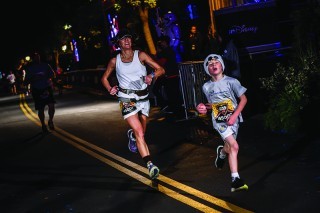
I don’t dress up for Halloween, and I’ve never worn a costume in a race in my 25 years of running. Yet here I am at 5 a.m. on a cool January morning just outside of Disneyland, nervously fidgeting in the starting chute of the runDisney Star Wars 5K, dressed as Princess Leia in a white cotton sundress, cinnamon-roll buns made out of a wig on the sides of my head.
My equally eager 7-year-old son, Sam, stands next to me in Stormtrooper socks and a Stormtrooper beanie. He’s a runner, and he’s fired up to race. He’s also fired up that the giant screen above the starting line is playing clips from Star Wars, The Force Awakens and the race emcees are quizzing the crowd on character trivia well before the sun begins to brighten the Southern California sky. We’re in a sea of 5,000 runners and walkers lined up for the 5K, standing between a Wookiee and a guy wearing a stuffed Yoda on his back.
I worry that my Leia buns will flop too much as we run, and part of me feels absolutely ridiculous. But, you know, anything for the kids.
Not that traveling from our home in Boulder, Colo., to spend a few days racing and visiting Disneyland in Anaheim is entirely, or even mostly, for the kids.
Having grown up in San Diego, trips to Disneyland have always signified something special—birthdays, other special occasions. I’m a Disney fanatic, but not the pin-collecting, mouse-ear-wearing type. I’m more the Disney-movie-loving, sentimental adult who loves reliving it all through my kids.
And since running can be selfish, combining a weekend of racing with a trip to Disneyland seemed like a win-win for my family of four.
I signed up for the 5K with my 7-year-old, held Friday morning. My husband, Mark, would run the 10K Saturday morning, and then I’d race the half marathon on Sunday. My 4-year-old son, Ben, turned down the option to run the kids’ sprint or the 5K. He was mostly excited to see Mickey and Pluto, and who can blame him?
The post Chasing Leia: One Family’s Star Wars Half Marathon Weekend Experience appeared first on Competitor.com.
May 24, 2016
7 New Must-Read Running Books
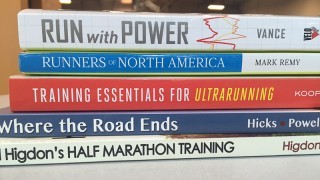
Here are seven recently published books about running we’d highly recommend.
RELATED: The 25 Greatest Running Books of All-Time
Photo Gallery
1 of {count}
Back to Start
View Larger Image

"Run with Power: The Complete Guide to Power Meters for Running," by Jim Vance
Power meters for runners—and the corresponding
training protocols based on power
output—have only become available recently,
so the art and science of using power for run
training are still very much in their infancy. But
running and triathlon coach Jim Vance spells it
all out in the first detailed book on the subject,
explaining why power could become the ultimate
training and racing metric for runners. Vance
shows how power monitoring can allow a
runner to precisely manage training or racing
intensity as it relates to physiological markers
like lactate threshold. He also outlines how a
runner can monitor efficiency and optimize
pacing and performance by using real-time
power monitoring. This 352-page book can
give insights to unlocking performance breakthroughs
for technically inclined runners of
any ability level. ($19, VeloPress)
View Larger Image

"In the Distance: Why We Struggle with the Demands of Running" by Dave Griffin
Running has been part of the fabric of Dave Griffin's life for more than 40 years and he opens up about his experiences in the follow-up to his first book, "After the Last PR – The Virtues of Living a Runner’s Life." He began running in 1976 as a high school freshman and ran competitively through 1989 with PRs that include a 1:12:24 half marathon. After a 12-year period of casual running when his children were young, he returned to competitive running as a masters runner. He also started the Flying Feet Running Programs in 2004 while his daughter, Katie, was running in high school. It's from these experiences that Griffin relates stories of his own running and everyday experiences that weave together life lessons that apply to all of us. The book is full of heart-warming tales written in a conversational tone that can put running into perspective for any level of runner as he tackles topics that include fear, confidence, parenting, aging, friendship, self-acceptance and the virtues of success. He also addresses how self-discipline in running helps people tackle bigger challenges in life, how the so-called "runner's high" is truly therapeutic and how running can help an individual appreciate the clarity inner peace can bring. Even a runner who has never trained to run fast races will appreciate the keen insights and pearls of wisdom Griffin serves up. ($14, Flying Feet)
View Larger Image
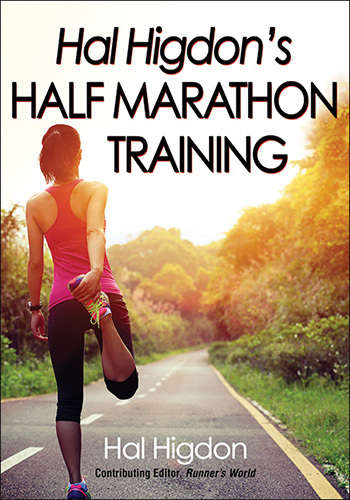
"Hal Higdon's Half Marathon Training," by Hal Higdon
Hal Higdon was one of the first coaches of the original running boom and his sage advice continues to offer worthy input to runners of all abilities. This book offers insights to numerous aspects of half-marathon training, including 16 customizable training plans. His 11 secrets of success are invaluable tips, while his explanation of the importance of easy and hard running is also key. ($20, Human Kinetics)
Related Galleries

4 New Must-Read Running Books

13 Running Books You Should Be Reading Right Now
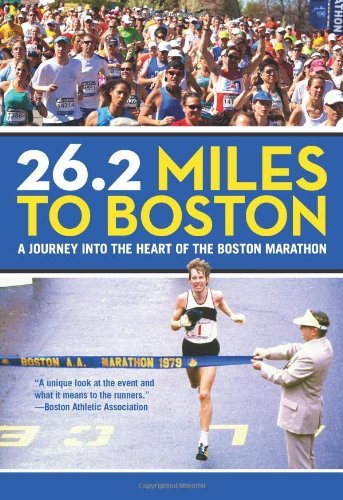
New Books About The Boston Marathon

5 New Books To Help You Stay Fit In 2014

More Galleries
The post 7 New Must-Read Running Books appeared first on Competitor.com.
Blisters: A 9-Step Plan for Trail Runners to Address Them
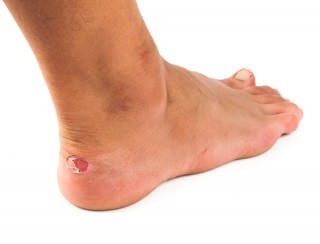
Adapted with permission of VeloPress from Training Essentials for Ultrarunning by Jason Koop, coach to elite ultramarathoners. In his book, Koop reveals his highly effective ultramarathon training methods for ultrarunners of all abilities.
Training is the first level of prevention in the formation of blisters. Your skin adapts to stress just like any other organ in your body. Many studies, primarily involving the military, have demonstrated that gradual exposure to frictional forces on the foot (through hikes and marches) decreases the skin’s susceptibility to blisters (Allan 1964; Hodges, DuClos, and Schnitzer 1975; Knapik et al. 1995).
As you train, your epidermal skin cells become thicker and in theory more cohesive, making them more resistant to blisters. How does this happen? As you run, you slough off skin cells faster than normal. These are rapidly replaced by new skin cells, but these young cells don’t get the chance to differentiate into layer-specific cells (epidermis, dermis) before they are stressed by another run (S. H. Kim et al. 2010). When this happens frequently over a relatively short time, it results in overthickened skin (i.e., the callus).
Still, you’ve got a great chance of getting blisters during an ultramarathon. Whenever you stress an organ or a structure in your body beyond its capabilities, you cause damage. Ultramarathons normally represent a longer, more difficult run than your day-to-day training, complicated by the fact most ultramarathon events occur in areas away from your home training grounds. The trail surface, camber, dirt, dust, and debris your feet encounter are undoubtedly different during the race than at home. Furthermore, your biomechanics are different depending on the properties of the trails, placing stresses on different areas of the skin of the foot. Therefore, the shoe/sock/powder/tape/lubricant/insole combination that worked in training may not always work during the race. Just as training on flat ground will not completely prepare you for a mountainous ultra, training on your home trails might not fully prepare your feet for the rigors of race day. Therefore, a combination of education, preventive measures, and wound care skills offers the most comprehensive way to ensure that your hard-earned training does not come undone by the unraveling of your feet on race day.
If you do get blisters (or the precursor, which is referred to as a “hot spot”), you have a decision to make: You can save some time and continue running, or stop and lose some time treating your feet. In making this decision, you need to balance your race-day goals, performance expectations, safety, and race situation. Generally speaking, the more time you have left to run and the bigger the problem could become, the more it is worth your while to take a few minutes and fix what is wrong. Don’t let little problems become big problems. My advice is to always err on the side of caution and fix problems early, particularly at the 100K and 100-mile distances, where there is a lot of ground to cover. Blisters come in a variety of shapes, sizes, and levels of discomfort. Treatments also come in many shapes and forms. Unless you are a medical professional with many years of blister management experience, a simple solution is always best.
I have found success with the following nine-step plan:
1. Clean the surface of the blister and the surrounding skin. If an alcohol pad or disinfectant is available, use it. If not, it is still usually best to proceed to step 2. You are less prone to infection if you can properly manage the blister while it is small and treatable. Large broken blisters will become more prone to infection more readily than small broken blisters because there is more opportunity to become infected through the larger area of damaged and exposed skin.
2. Puncture the blister with a needle, sharp scissors, or scalpel. Take care to puncture the blister enough to allow fluid to drain but not so much that the blister roof becomes detached. If you are using a needle (safety pins from a race number also work well), put three to four holes in the blister so that it will drain. Ideally, place the punctures such that fluid can continue to drain while you keep on running.
3. Squeeze the fluid out of the blister.
4. Clean and dry the surface of the blister and the surrounding skin. You are now prepping the skin to apply a patch, so ensure that it is dry and free of debris. You can choose to add a very small dab of lubricant to the blister roof. This is to prevent the patch from sticking to the blister roof when you eventually peel the tape off.
5. Size up the area you are going to patch, and cut a piece of tape or bandage to cover the blister. The patch should be large enough so that it can stick to the surrounding skin. If the blister is on a toe, this might mean wrapping the entire toe. If you do have to wrap a toe, it’s usually best to wrap the adjacent toes also so that the tape does not rub directly on adjacent skin.
6. Apply a tape adhesive such as tincture of benzoin to the area surrounding the blister. Although the tape has its own adhesive backing, using an additional tape adhesive will ensure a better stick.
7. Place the tape down on the skin from one edge of the tape to the other. Be careful to avoid folds and creases. If you do get a fold or a crease, start over.
8. Lightly press down on the patch to ensure the adhesive completely sticks to the skin.
9. Put your socks on, lace up your shoes, and run!
If you are particularly blister prone, practice various techniques at home. Cutting and placing the patch on the surface of the skin can be the most frustrating part of the process during a race. The tape is sticky and adheres to itself and to your fingers. You’re in a hurry. You’re sweaty and dirty. And you’re working in a dirty, dusty environment. Finding a routine and learning some simple skills goes a long way to making the process smoother and faster in race conditions. As with any other skill, practice makes perfect!
***
Jason Koop is the Director of Coaching for CTS and a coach to elite ultrarunners. His new book Training Essentials for Ultrarunning reveals his highly effective ultramarathon training methods. The book is now available in bookstores, run shops, and online. Learn more at velopress.com/koop.
The post Blisters: A 9-Step Plan for Trail Runners to Address Them appeared first on Competitor.com.
Video: The Subtle Intensity of Nike OTC Elite’s Training Group
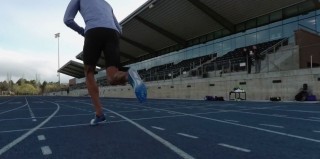
The Nike OTC Elite squad recently completed a pre-Olympic Trials training camp in Arizona. Check out this inspiring 60-second montage from Mac Fleet on Vimeo showing the subtle intensity that fuels the training of some of America’s top track athletes.
The post Video: The Subtle Intensity of Nike OTC Elite’s Training Group appeared first on Competitor.com.
New York Mini 10K to be “Mini Olympic Marathon” Preview
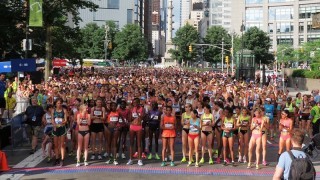
Photo: David Monti/Race Results Weekly
(c) 2016 Race Results Weekly, all rights reserved. Used with permission.
NEW YORK— The 45th edition of the NYRR New York Mini 10K, scheduled for Saturday, June 11, will feature 18 women from 17 countries who will run the Olympic Marathon in Rio, New York Road Runners announced today. This “Mini Olympic Marathon” preview will likely be the largest gathering of Olympic Marathon women at a privately organized race before the Women’s Olympic Marathon on Sunday, August 14.
Leading the field will be the USA’s Des Linden, who clinched her second Olympic Marathon team berth at the USA Olympic Trials Marathon last February in Los Angeles. It will be her fourth appearance at the Mini.
“With 18 athletes from 17 different countries on the ‘Road to Rio’ for the marathon, this could be the most recognized field in the 45-year history of the New York Mini 10-K,” observed Peter Ciaccia, NYRR president of events and the race director of the TCS New York City Marathon. Through a statement he continued: “With Des leading the way, we’ll also have a top field of Americans in a race that has historically brought together women of all ages and abilities, and an event that has become a model for women’s road races around the world.”
Olympic-bound athletes from Argentina, Australia, Brazil, Burundi, Colombia, Denmark, Great Britain, Hungary, Ireland, Japan, Kenya, Lithuania, Mexico, Peru, Puerto Rico, and South Africa, will line up for the race’s iconic start on Central Park West, said Ciaccia. Eight of the Olympic Marathon women have broken 33:00 on the road for 10K, while 12 women in the entire field have broken the 33-minute mark for 10 kilometers, either on the road or track.
In addition to Linden, several women have medal hopes in Rio, including Kenya’s Jemima Sumgong, the 2016 Virgin Money London Marathon champion; Diane Nukuri of Burundi, the 2013 Francophone Games 10,000m champion; and Tomomi Tanaka of Japan, the top Japanese finisher at the 2016 Nagoya Marathon. Linden knows that facing tough competitors like these will help immensely with her Rio preparations.
“I’m excited to officially be on the road to Rio,” Linden said in a statement provided by New York Road Runners. “I feel like I need one more opportunity to compete and test my fitness and the NYRR New York Mini 10K is the perfect fit. NYRR will put on a top-notch event with a world-class field that will serve as a preview of the Olympic Marathon competition this summer. I look forward to participating in the 45th edition of this historic race that has played such an important role in women’s running.”
Indeed, the establishment of the Mini in 1972, the first-ever road race in the world for women, was an important step in getting the marathon added to the Olympic program for women in 1984 when Joan Benoit ran away from a stellar field in Los Angeles to claim gold. Now women make up about half of all road race finishers in the United States, according to industry organization, Running USA.
To add a special element to this annual celebration of women’s running, New York Road Runners also announced that a new 1.7-mile Girls’ Run will be added to the program this year. Organizers expect about 500 girls to take part, from ages seven to 18.
“Since 1972, the New York Mini has been an inspirational event for women and a shining example for the world of running,” said Michael Capiraso, president and CEO of New York Road Runners through a statement. “The first-ever Girls’ Run at the NYRR New York Mini 10K is the next step in the evolution of this iconic race, allowing women of all ages to come together and help and inspire each other through running.”
The race, which will be broadcast LIVE on USATF.tv, offers a total prize money purse of $35,000, including $10,000 for the race winner and $5,000 for the top American.
The post New York Mini 10K to be “Mini Olympic Marathon” Preview appeared first on Competitor.com.
Ryan Hall's Blog
- Ryan Hall's profile
- 21 followers



